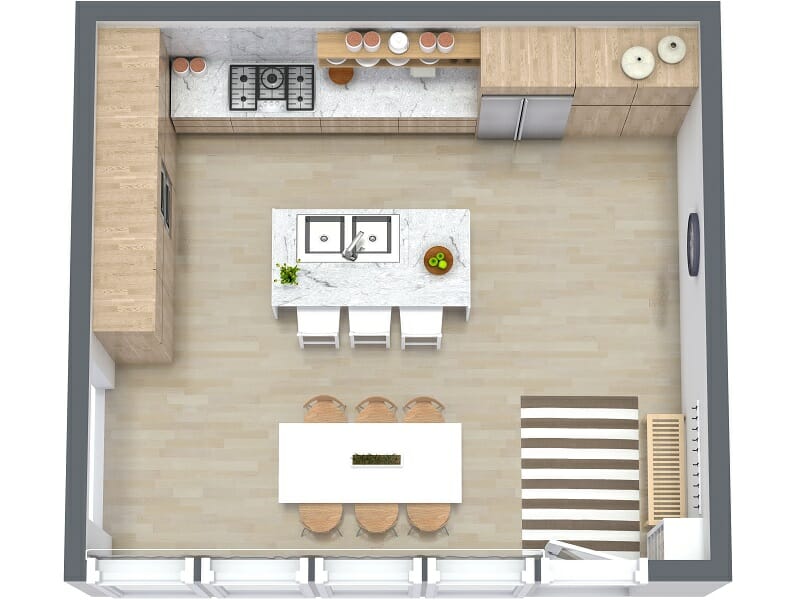
Kitchen Layout App For Mac
3d Restaurant Design software Free Download Excerpt: 3d Restaurant Design Software Free Download Awesome Image 3d Home Design App For Mac 3d Room Planner App Home Design is one of gallery from 3d Restaurant Design software Free Download and also lebeled with Interior. Posted by Virginia Payne. Or Hit here to back to Main Post.
Become your own kitchen designer with the help of the IKEA 3D Kitchen Planner. Thanks to our easy-to-use software, you can choose cabinets, doors, and appliances to fit the exact measurements of your kitchen. Get started today. When you’re ready, either print out your drawings and product list at home, or save your plan to the IKEA server. At the IKEA store or over the phone through you can discuss your drawing with one of our kitchen experts.
They’ll go over the final details with you, so you can take your kitchen from drawing to reality.
I'm in what I hope are the final tweaking stages of cabinet and layout planning and find that I'm having a hard time picturing how some pieces will come together. I'd like to use one of the many kitchen designing programs.like the Ikea one, for example.to get a better perspective on how the whole kitchen will flow, but haven't found one that will work with my Mac. And my graph paper sketches just aren't cutting it. Can anyone refer me to a Mac-friendly program.or will I have to go spend mucho $$$$ to 'see' my planned kitchen? Sketchup 7 is a free CAD program from Google that has a Mac version. (They also have a Pro version that they charge for).
It's NOT kitchen design program, but you can at least draw a 3 dimensional representation of your kitchen. With PC's you do need a graphics card in your computer - not sure about macs. I've used some of the 3D Home design software in the past, but never any other CAD software. It didn't take very long to figure out how to put together some useful drawings. Here is a link that might be useful. I'm a design person but still find the learning curve on Sketchup a bit steep.several years in I'm still getting the hang of it.

So I use that, but I also use the almost-free Sunset Kitchen Designer, which is more limited (appliances, cabinets, finishes only in certain sizes and styles, versus Sketchup where you can do everything under the sun) but far simpler---drag and drop placement, so it's a lot quicker. It does 3-D renderings and walk-throughs, which have been hugely valuable. I got our copy when I bought the Sunset Magazine Kitchen Design book (also very useful for ideas) for $15 or so. You might be able to get the program online, too; not sure. Also, for Ikea people, I don't have the link anymore but last fall I played with the Ikea Mac version on the European site---worked fine except for everything being in Swedish and in metric (and their Europe v.
Stock varies a bit), but I found that if I sat with the U.S. Website open, I could tell pretty quickly what was what, and was able to throw our layout into it pretty readily. I think I found the link on IkeaFans somewhere.
More tedious, of course, but not as tedious as getting a PC.;). It is interesting to see the wide range of reactions to Sketchup. I wanted to add some thoughts/tips that might help the learning curve, or perhaps convince you that Sketchup is not for you.. Sketchup is a CAD program, basically you are defining line segments that enclose surfaces. The application is literal and precise, a 0.0001' miss is as good as a mile. So the first rule is, don't size things 'by eye'. If you want a line 48.125' long, use the pencil tool to start the line and type 48.125 [enter].
What resolution movie for mac. Don't drag the pencil to a smidge over 48', that will not work. If you want to draw a line parallel to an existing line, use the measurement tool to pull a parallel guideline, then draw the line over the guideline. Don't wave the pencil tool around until the lines 'look' parallel, they won't be. Second rule is that surfaces cannot be curved. Drawing line segments to enclose a space will not create a surface, unless the segments are all in the same plane (co-planar). Hence the need for precise lengths, if you're trying to draw table legs up from the ground, the top surface can't be created unless the legs are all the exact same length. 'Curved' surfaces are built up from flat surfaces, which is usually too much of a pain for casual kitchen planning.
Third rule is that the two surfaces of a wall have to be exactly parallel. If not, then the usual technique of cutting a window by drawing a rectangle and then using the 'push/pull' tool to push the rectangle through the wall, will not work. Again, if you drew the wall by eye, you're going to have a problem. Fourth rule is, where possible, build an object (e.g.
A range) by drawing the range's footprint on the floor, 'pulling' that up to make a 3D box, then adding detail to the box, Don't start by drawing each side and corner of the range, that is too tedious. Fifth rule is, import rather than build. 3D Warehouse has hundreds of kitchen items that you can import into your model, some contributed by the manufacturers. Sixth rule is, make things into components. If you have an appliance, make it a component so that you can move it around, try it in different locations.